In 2025, your website is more than just a digital address.
It is where audiences engage. It is where people find you. It’s your salesperson. It is nothing short of the very heart of your brand’s online presence.
We’re witnessing rapid shifts. With AI accelerating and personalized content reshaping the CMS landscape, choosing the right website builder and content management system (CMS) must be part of your strategy. It is a chess move; it may even be your first move. One that can play a central role in your ongoing success. How can you make the right one?
There are so many builders out there. Deciding which one is best for you can be daunting. That’s why we’ve put together this Power Ranking of the top 5 builders in 2025. This power ranking isn’t just about what’s popular. That’s a factor, yes, but what’s most important is flexibility and futureproofing beyond this year.
Website Builders vs. CMS – What’s the Difference?
Before we dive into the rankings, let’s clear up some common questions. You’ve heard terms like “website builder” and “CMS” thrown around, but what exactly do they mean, and are they the same thing?
Think of it this way:
Website Builders are often all-in-one platforms designed for ease of use. They provide everything you need to build a website. They handle the hosting, security, and technical backend, allowing you to focus on design and content. They are excellent for getting online quickly with minimal technical knowledge.

A Content Management System (CMS) allows you to create and manage content on your website without writing code. While some CMSs also offer hosting and design tools, many provide the core content management functionality. So, you have more control over the underlying code, database, and server environment.
The key difference often lies in flexibility and control. Website builders offer simplicity and speed, but with limitations. A CMS provides greater power and customization but requires a bit more technical knowledge. Many platforms today blur these lines, so we will have some of both in this list.
Ready to discover which builders and CMSs are leading the charge? Let’s count them down. Welcome to Sharp Wilkinson’s inaugural Website Builder Power Rankings!
Honorable Mentions
Before we unveil our top five, let’s look at a couple of platforms that, while strong, didn’t quite make our ranking for versatility or market presence.

“Headless CMSs” (e.g., Contentful, Strapi, Storyblok):
This architecture represents a shift in content delivery, offering flexibility for omnichannel experiences in 2025.
Unlike traditional CMS builds, where content and presentation are intertwined, a headless CMS decouples these elements.
This means your content is managed centrally but can be delivered via APIs to any “head.” A website, mobile app, and so on. However, this approach requires more technical expertise for implementation. This means higher development costs, and separate development for the “head” (that is, the front end that people actually see).
Adobe Commerce (previously Magento)
Since being acquired by Adobe, the artist formerly known as Magento remains a powerful, enterprise-grade e-commerce platform. It is suited for B2B/B2C operations that demand product catalogs and customized workflows.
Its considerations include high costs and development resources. It also often includes a learning curve. Great for specialized e-commerce; still lacking as a general-purpose CMS.
The Power Rankings: Top 5 Website Builders for 2025
#5 Wix
With approximately 7 million live websites in 2025, Wix is a go-to builder for its user-friendliness and feature set. It’s an accessible and effective platform for building an online presence, especially when speed and ease are paramount.
Key Strengths:
- AI-Powered Assistance: Wix is actively integrating AI for site creation, layout suggestions, and even content generation, streamlining the design process.
- Drag-and-Drop Editor: Its visual editor remains a significant draw, enabling users with no coding background to craft stunning sites with ease.
- Integrated Solutions: Built-in e-commerce, booking, and SEO tools.
- Template Library: Users benefit from a selection of designed templates to jumpstart projects.
live websites built on Wix (May 2025)
Ideal for small businesses, freelancers, artists, and individuals who prioritize quick launch, ease of use, and a strong visual presence.
While flexible within its ecosystem, Wix is adaptable for highly custom features or large-scale content operations. Also, as a hosting solution, users have less direct control over the underlying server environment.

#4 Squarespace
Powering approximately 6.2 million live websites in 2025, Squarespace has gone from a simple to a full cloud-based CMS. It particularly shines for its emphasis on elegant design and integrated functionality, making it a favorite for the visually driven. Squarespace offers more control over your site’s design than Wix, so claims the #4 spot.
Key Strengths:
- AI-Powered Design: Squarespace is leveraging AI for site creation, layout suggestions, content generation, and image optimization.
- User-Friendly: Its intuitive drag-and-drop editors allow non-technical users to build sites efficiently.
- All-in-One Solutions: Offers built-in e-commerce, booking, marketing, and SEO tools, reducing the need for external integrations.
- Mobile-First Design: Provides responsive design capabilities out-of-the-box for a consistent experience across devices.
live websites built on Squarespace (May 2025)
Ideal for small businesses, freelancers, artists, portfolios, and personal websites that need a professional launch quickly and without coding.
Squarespace can be less flexible for highly custom features or massive content operations. Like Wix, Squarespace also offers less control over the server environment.

#3 Drupal
Powering approximately 400,000 websites in 2025, Drupal is an open-source CMS perfect for complex, high-traffic, and security-conscious websites. Its user base is smaller than its competitors, but Drupal is more specialized, which makes it an intriguing choice (if it fits your specialty). That specialty means Drupal doesn’t need to devote the same budget to advertising as Wix and Squarespace, so fewer people know about it.
Key Strengths:
- Scalability & Security: Built to handle vast amounts of content and high user traffic.
- Content Modeling: Ideal for structured content, custom content types, and intricate data relationships.
- Advanced Features: User permissions and workflows are core strengths, supporting complex organizational structures.
- Headless Prowess: It’s a strong contender for headless implementations, providing a powerful backend for diverse frontends.
- AI Integration: Advancements in AI are enhancing content optimization, personalization, and streamlining editorial workflows.
live websites built on Drupal (May 2025)
Ideal for large organizations, universities, and complex web applications requiring extensive customization and security. Drupal represents an emerging player in the website building space and definitely one to watch for the future.
Drupal has a steeper learning curve than many other CMS platforms. It generally requires more technical expertise and developer resources for implementation and maintenance.

#2 Shopify
With approximately 4.9 million live websites in 2025, Shopify is the undisputed leader in hosted e-commerce. It offers a complete, user-friendly platform, functioning as both an e-commerce platform and as a CMS.
Key Strengths:
- AI-Driven Commerce: Integration of AI enhances personalized shopping experiences and product recommendations.
- Seamless Selling: Manages everything from product management and inventory to payments, shipping, and fulfillment.
- Omnichannel Selling: Provides strong capabilities for selling across social media, online marketplaces, and physical retail.
- App Ecosystem: A vast app store allows for significant customization and extension of functionality without coding.
- Focus on Buyer Experience: Continuous innovation in checkout processes, mobile shopping, and rich content (e.g., 3D models, video) for a positive user experience.
live websites built on Shopify (May 2025)
Ideal for e-commerce businesses of all sizes, from aspiring entrepreneurs to large-scale online retailers.
While Shopify does include blogging features, its CMS capabilities are less flexible for content-heavy sites.

#1 The Winner: WordPress
With approximately 32.8 million live websites in 2025, WordPress remains the undisputed leader in market share. In fact, just under a quarter of Built With‘s top million sites are WordPress. The platform continues to evolve, cementing its position as the most versatile, accessible, and future-proof CMS for the vast majority of web projects.
Key Strengths:
- AI Everywhere: WordPress is at the forefront of integrating AI for content creation, SEO optimization, and site management.
- Full Site Editing (FSE) & Block Themes: These features provide unprecedented visual control and flexibility for non-developers, empowering users to design entire websites without coding.
- Hybrid Headless Capabilities: A growing adoption of headless WordPress for decoupled architectures offers the best of both worlds: easy content management and flexible front-end development.
- Unrivaled Community: A massive sandbox of themes, plugins, developers, and support resources ensures virtually any functionality is possible, and help is always available.
live websites built on WordPress (May 2025)
Ideal for everything from personal blogs and small business websites to large-scale e-commerce stores (with WooCommerce), corporate sites, online publications, and complex web applications.
WordPress can become resource-intensive or complex with an abundance of plugins. Security requires diligent management (regular updates, strong hosting). Custom development for highly unique features can still be a factor.
Your Next Step: Choosing a Champion
With all this said, though, the “best” CMS is the platform that best aligns with your specific project needs, budget, and technical capabilities. Before making your decision, consider these key factors:
- Project Scope & Scale: Are you building a simple blog, an online store, or an enterprise-level content hub?
- Technical Expertise: Do you have developers on your team, or do you require a no-code/low-code solution?
- E-commerce Requirements: How critical is online selling? What level of complexity do you need for products and transactions?
- Security & Scalability: What are your non-negotiable requirements for performance, data protection, and handling future growth? Do you have industry regulations?

Ready to Build Your Digital Future? The Journey Continues!
Armed with these insights into the top CMS platforms of 2025, you’re now poised to make an informed decision for your digital future.
To continue your website development journey and unlock your project’s full potential, visit Sharp Wilkinson and drop us a line. We’re here to help you navigate the complexities and build a winning online presence.


![20250616_SPW_SEOSmallBizGuideCTA_1080x1080 Boost Your Online Visibility! Unlock the secrets to a top-ranking website with our FREE SEO Guide for Small Businesses. [Download Your Guide Now!]](https://sharpwilkinson.com/wp-content/uploads/2025/06/20250616_SPW_SEOSmallBizGuideCTA.png)



